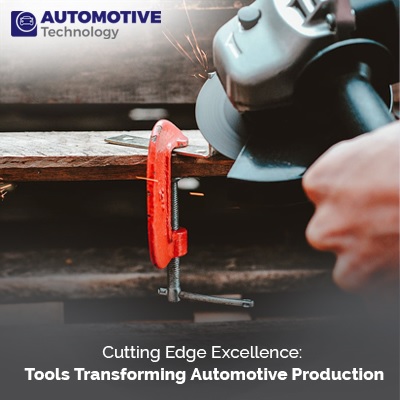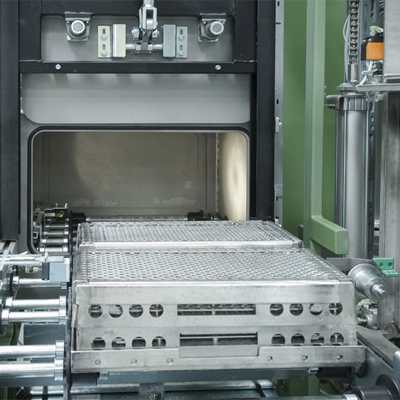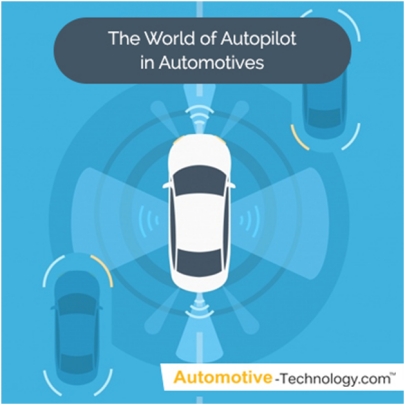Articles
Cutting Edge Excellence: Tools Transforming Automotive Production

In today's rapidly evolving automotive industry, manufacturers are constantly seeking innovative solutions to stay ahead of the competition. The advent of cutting-edge technologies has revolutionized automotive production, paving the way for increased efficiency, cost-effectiveness, and unparalleled precision. From advanced 3D printing to sophisticated robotics and augmented reality, these tools are transforming every aspect of the production process, from design and prototyping to assembly and quality assurance.
Implementing these tools not only streamlines production but also ensures a higher level of quality control, reducing errors and waste. For automakers, this translates into faster time-to-market, improved productivity, and enhanced customer satisfaction. With the automotive industry becoming more responsive to changing consumer demands, these tools provide manufacturers with the flexibility to adapt to evolving trends and preferences.
Benefits of using advanced tools in automotive production
The adoption of advanced tools in automotive production brings numerous benefits to manufacturers. One of the key advantages is increased efficiency. Automation and robotics have significantly improved the speed and accuracy of various production processes. With the help of robots, tasks that were once time-consuming and labor-intensive can now be done with precision and speed. This not only saves valuable time but also reduces costs associated with manual labor.
Another benefit of advanced tools is enhanced quality control. By leveraging technologies such as artificial intelligence and machine learning, manufacturers can detect defects and errors at a much earlier stage. This allows for timely interventions and adjustments, resulting in higher-quality vehicles. Additionally, the use of virtual reality and augmented reality enables designers and engineers to visualize and simulate the assembly process, ensuring seamless integration and reducing the chances of errors during production.
Furthermore, advanced tools enable manufacturers to meet the growing demand for customization. With 3D printing and additive manufacturing, automakers can create complex and personalized components, reducing the need for expensive molds and tooling. This not only saves costs but also enables manufacturers to cater to individual customer preferences, providing a unique and tailored driving experience.
Automation and robotics in automotive production
Automation and robotics have revolutionized the automotive production process by introducing speed, precision, and consistency. Robots are now performing tasks that were once exclusively done by human workers, such as welding, painting, and assembly. This not only reduces the risk of human error but also increases productivity and efficiency.
In the manufacturing of automobiles, robots play a crucial role in repetitive tasks that require accuracy and consistency. For example, robots are used in the assembly line to install components with precision, ensuring a perfect fit every time. They can also perform quality inspections, identifying defects and inconsistencies that may be missed by human eyes. Additionally, robots are increasingly being used in hazardous environments, such as painting booths and welding areas. By delegating these tasks to robots, manufacturers can ensure the safety of their workers and reduce the risk of accidents and injuries.
Artificial intelligence and machine learning in automotive production
Artificial intelligence (AI) and machine learning (ML) are transforming automotive production by enabling predictive maintenance, optimizing production schedules, and improving quality control.
With AI and ML algorithms, manufacturers can analyze vast amounts of data collected from sensors and machines. This data can be used to predict when maintenance is needed, preventing unexpected breakdowns and reducing downtime. By adopting predictive maintenance strategies, manufacturers can save costs associated with unscheduled repairs and increase the overall efficiency of their production lines. Moreover, AI and ML algorithms can optimize production schedules by analyzing historical data, demand forecasts, and supply chain information. This allows manufacturers to allocate resources effectively, reducing bottlenecks and ensuring a smooth production flow. By optimizing production schedules, manufacturers can meet customer demands more efficiently and minimize order lead times.
Furthermore, AI and ML algorithms can enhance quality control by analyzing data from sensors and cameras. These algorithms can detect anomalies and defects in real-time, allowing for immediate corrective actions. By implementing AI-powered quality control systems, manufacturers can reduce the risk of faulty products reaching the market and enhance customer satisfaction.
Virtual reality and augmented reality in automotive production
Virtual reality (VR) and augmented reality (AR) are revolutionizing the automotive production process by enabling immersive design, virtual prototyping, and assembly simulations.
VR technology allows designers and engineers to create virtual environments where they can visualize and manipulate 3D models of vehicles. This enables them to make design decisions more efficiently and effectively. By immersing themselves in a virtual environment, designers can evaluate the aesthetics, ergonomics, and functionality of a vehicle before committing to physical prototypes. This not only reduces the time and costs associated with physical prototyping but also enables faster iterations and refinements. AR technology, on the other hand, overlays digital information in the real world, allowing for real-time visualizations and instructions during assembly. By wearing AR glasses or using handheld devices, assembly workers can see digital overlays that guide them through the assembly process. This reduces the risk of errors and improves the efficiency of assembly operations. Furthermore, AR technology can provide real-time access to technical information and maintenance instructions, empowering workers with the knowledge they need to perform their tasks effectively.
3D printing and additive manufacturing in automotive production
3D printing and additive manufacturing have revolutionized automotive production by enabling rapid prototyping, customization, and the production of complex components.
With 3D printing, manufacturers can quickly create physical prototypes of new vehicle designs. This allows designers and engineers to evaluate the form, fit, and function of a vehicle before committing to expensive tooling and production processes. By enabling faster iterations and refinements, 3D printing accelerates the design process and reduces time-to-market. Additionally, 3D printing enables the customization of vehicle components. By using additive manufacturing techniques, manufacturers can produce parts that are tailored to individual customer preferences. This not only enhances customer satisfaction but also reduces the need for expensive molds and tooling. Moreover, 3D printing allows for the production of complex geometries that are difficult or impossible to achieve with traditional manufacturing methods.
Furthermore, 3D printing can also be used for on-demand spare parts production. By storing digital files of spare parts, manufacturers can quickly reproduce components as needed, reducing inventory costs and lead times. This ensures that spare parts are readily available, minimizing vehicle downtime and improving customer service.
Internet of Things (IoT) in automotive production
The Internet of Things (IoT) is transforming automotive production by connecting machines, sensors, and devices to optimize production processes, improve quality control, and enable predictive maintenance.
By equipping machines and equipment with sensors and connectivity, manufacturers can collect real-time data on their performance and status. This data can be used to monitor and optimize production processes, identify inefficiencies, and reduce waste. For example, by analyzing data from sensors, manufacturers can identify bottlenecks in the production line and take corrective actions to improve overall efficiency. Furthermore, IoT-enabled devices can enhance quality control by continuously monitoring the production process and detecting anomalies. By leveraging machine learning algorithms, manufacturers can detect patterns and deviations from normal operating conditions, allowing for immediate interventions and adjustments. This ensures that only high-quality products reach the market, improving customer satisfaction and reducing warranty claims.
Moreover, IoT-enabled devices can enable predictive maintenance by monitoring the condition of machines and equipment. By analyzing data from sensors, manufacturers can predict when maintenance is needed, preventing unexpected breakdowns and reducing downtime. This proactive approach to maintenance not only saves costs but also increases the overall reliability and performance of production systems.
Case studies of successful implementation of cutting-edge tools in automotive production
Several automotive manufacturers have successfully implemented cutting-edge tools in their production processes, showcasing the transformative impact of these technologies.
One such example is Tesla, known for its innovative approach to electric vehicle production. Tesla has heavily invested in automation and robotics, utilizing a vast fleet of robots in its assembly lines. By leveraging advanced robotics, Tesla has achieved high levels of efficiency and precision, enabling the production of electric vehicles at scale. Furthermore, Tesla incorporates AI and ML algorithms in its quality control processes, ensuring that only vehicles of the highest quality are delivered to customers.
Another example is BMW, which has embraced virtual reality in its design and prototyping processes. By using VR technology, BMW designers can evaluate vehicle designs in a virtual environment, allowing for faster iterations and refinements. This has significantly reduced the time and costs associated with physical prototyping, enabling BMW to bring new models to market more quickly. Additionally, BMW has implemented 3D printing in its production processes to create customized components and spare parts. By leveraging additive manufacturing techniques, BMW can tailor vehicle components to individual customer preferences, enhancing customer satisfaction. Moreover, 3D printing allows BMW to produce complex geometries that would be difficult or impossible to achieve with traditional manufacturing methods.
Challenges and considerations when adopting advanced tools in automotive production
While the adoption of advanced tools in automotive production brings numerous benefits, there are also challenges and considerations that manufacturers need to address.
One of the main challenges is the initial investment required to implement these technologies. Advanced tools such as robotics, AI, and 3D printing can be expensive to acquire and integrate into existing production processes. Manufacturers need to carefully evaluate the return on investment and develop a clear business case before embarking on these transformative initiatives. Another consideration is the need for skilled professionals who can operate and maintain these advanced tools. Manufacturers need to invest in training and development programs to ensure that their workforce is equipped with the necessary skills to leverage these technologies effectively. Additionally, manufacturers may need to attract and retain talent with expertise in areas such as robotics, AI, and additive manufacturing.
Furthermore, there may be regulatory and compliance considerations when adopting advanced tools in automotive production. Manufacturers need to ensure that their processes and products comply with safety and environmental regulations. Additionally, intellectual property rights and data security should be carefully managed to protect sensitive information and prevent unauthorized access.
Conclusion: The future of automotive production with cutting-edge tools
In conclusion, the automotive industry is undergoing a transformative shift driven by cutting-edge tools and technologies. From automation and robotics to AI and 3D printing, these tools are revolutionizing every aspect of automotive production, enabling increased efficiency, cost-effectiveness, and unparalleled precision.
By embracing these transformative tools, automotive manufacturers can streamline production, improve quality control, and meet the growing demand for customization. These tools not only enhance productivity and customer satisfaction but also provide manufacturers with the flexibility to adapt to changing consumer demands.
As the demand for electric and autonomous vehicles continues to rise, the integration of cutting-edge technologies becomes even more crucial. These tools not only enable the manufacturing of safer and more sustainable vehicles but also drive innovation, propelling the automotive industry into a new era of excellence. Embracing these transformative tools is no longer an option but a necessity for automotive manufacturers looking to lead the pack in the era of electric mobility and autonomous driving. By investing in advanced tools and technologies, manufacturers can stay ahead of the competition, deliver superior products, and shape the future of automotive production. The possibilities are limitless, and the journey towards cutting-edge excellence has just begun.



